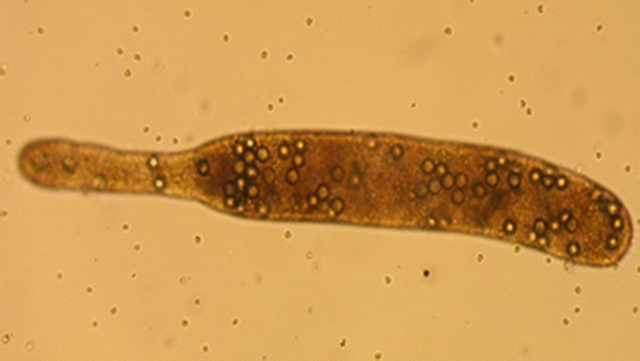Plankton faeces could move plastic pollution to the ocean depths – ‘The magnitude of change observed here is concerning’
1 March 2016 (University of Exeter) – Plastic waste could find its way deep into the ocean through the faeces of plankton, new research from the University of Exeter and Plymouth Marine Laboratory shows. The study is further evidence of the widespread impact plastic pollution could have on the marine environment. Researchers have found tiny marine creatures called zooplankton readily ingest “microplastics”, plastic debris smaller than one mm in size. This plastic is later egested within their faecal pellets. In the marine environment, faecal pellets help transport carbon and nutrients into deeper waters, helping the ocean store carbon and providing food for animals living within the water column. This new study showed plankton that ate polystyrene microplastics produced faeces that were lighter than normal and therefore sank more slowly. Because these pellets sink slower there will be greater opportunity for them to be eaten by animals. This is the first evidence that plastic polluting the ocean alters the structure, density and sinking rates of animals’ faecal pellets. Project leader Dr Matthew Cole, from the College of Life and Environmental Sciences said: “As these faecal pellets sink, they take the plastic with them. This could be an important route by which floating plastic litter is removed from the sea surface down to the ocean depths. We now need to determine whether this is evident in the field. “The magnitude of change observed here is concerning. We believe the impact of plastic contamination in the ocean deserves more detailed investigation and the team now hope to carry out further work in the natural environment.” Researchers modelled the implications of the plastic contamination in laboratory conditions using copepods, an ecologically important group of zooplankton, which play an important role in the food web, consuming faeces to support their nutritional needs. Dr Cole and ecologists from Plymouth Marine Laboratory, also provided microplastic-laden faecal pellets to zooplankton. They readily ate them, and inadvertently ingested the plastic too. It shows that microplastics can be indirectly ingested by other animals who consume these faecal pellets. Dr Pennie Lindeque from Plymouth Marine Laboratory said: “The work is particularly interesting having identified faecal pellets as a novel mechanism for transporting plastics between animals. Our next step is to see if this holds true in their natural habitat.” Microplastic contamination stems from tiny plastics used in exfoliating products and the fragmentation of plastic litter, including plastic bags and bottles. A vast range of marine organisms, including fish, turtles, seabirds, invertebrates, and zooplankton, are known to consume plastic debris. Other researchers have estimated there are over five trillion bits of microplastics floating in the ocean, and microplastics have been found in the intestinal tracts in a quarter of fish and a third of shellfish sold at markets in the U.S. and Indonesia. Previous studies have shown ingesting microplastic can lead to adverse health effects in a number of marine organisms. These include reduced feeding, energy reserves and activity to rework sediments. The NERC funded research Microplastics Alter the Properties and Sinking Rates of Zooplankton Faecal Pellets is published in the journal Environmental Science and Technology.
Plankton faeces could move plastic pollution to the ocean depths
ABSTRACT: Plastic debris is a widespread contaminant, prevalent in aquatic ecosystems across the globe. Zooplankton readily ingest microscopic plastic (microplastic, < 1 mm), which are later egested within their faecal pellets. These pellets are a source of food for marine organisms, and contribute to the oceanic vertical flux of particulate organic matter as part of the biological pump. The effects of microplastics on faecal pellet properties are currently unknown. Here we test the hypotheses that (1) faecal pellets are a vector for transport of microplastics, (2) polystyrene microplastics can alter the properties and sinking rates of zooplankton egests and, (3) faecal pellets can facilitate the transfer of plastics to coprophagous biota. Following exposure to 20.6 μm polystyrene microplastics (1000 microplastics mL–1) and natural prey (∼1650 algae mL–1) the copepod Calanus helgolandicus egested faecal pellets with significantly (P < 0.001) reduced densities, a 2.25-fold reduction in sinking rates, and a higher propensity for fragmentation. We further show that microplastics, encapsulated within egests of the copepod Centropages typicus, could be transferred to C. helgolandicus via coprophagy. Our results support the proposal that sinking faecal matter represents a mechanism by which floating plastics can be vertically transported away from surface waters.
Microplastics Alter the Properties and Sinking Rates of Zooplankton Faecal Pellets
